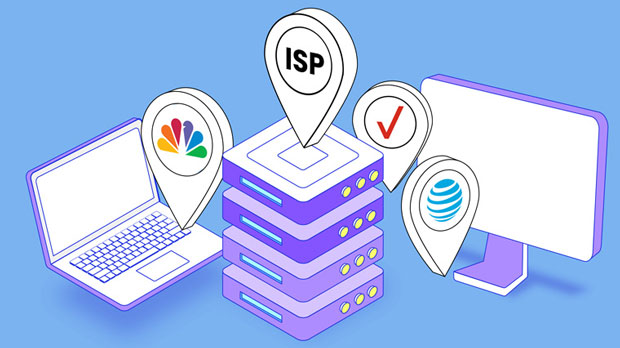When it comes to choosing a reliable proxy service for businesses or individual users, two prominent names that often come up are PYPROXY and Proxy4Free. Both are widely known for their proxy offerings, but how do they compare in terms of static proxy stability and long-term connection performance? This article will provide a detailed analysis of the two services, offering insights into the factors that influence proxy stability and the efficiency of long-term connections, ultimately helping users make an informed decision. Introduction: Understanding the Importance of Proxy Stability and Long-Term PerformanceIn the world of online browsing, web scraping, and data collection, proxies play a pivotal role in ensuring privacy, security, and uninterrupted service. static proxies, which provide a constant IP address over time, are particularly valuable for users who need to establish long-lasting connections without IP disruptions. PyProxy and Proxy4Free are two services that offer static proxies, but their performance and stability vary significantly depending on various factors like network quality, maintenance protocols, and server management.Before delving into the specifics of stability and long-term connection performance, it's important to establish that the comparison between PyProxy and Proxy4Free is not just about speed or availability but also about how effectively each handles sustained usage, especially in professional contexts. Static Proxy Stability: What Does It Mean?Static proxy stability refers to how consistently a proxy server can maintain its IP address over time. A stable static proxy ensures that users don’t experience frequent IP changes, which can interrupt sessions, block access to certain websites, or cause data collection failures. For businesses using proxies for tasks such as SEO monitoring, web scraping, or automated data collection, static proxy stability is crucial for ensuring reliable, uninterrupted service. Factors Affecting Static Proxy Stability1. Server Location and Network Infrastructure: The physical location of the proxy server and its underlying network infrastructure greatly influence stability. PyProxy typically offers more optimized server setups and locations, leading to better long-term stability. In contrast, Proxy4Free relies more on a variety of free proxies, some of which may not offer the same network reliability.2. Quality of IP Addresses: A good static proxy service should provide high-quality IPs that are not easily flagged or blacklisted. PyProxy tends to focus on premium IPs, which are less likely to experience downtime or be marked as suspicious by websites. On the other hand, Proxy4Free's free IPs may face challenges with maintaining stability, as free proxies are more likely to be flagged by websites due to high usage rates.3. Server Load and Congestion: A stable proxy should be able to handle high traffic without crashing or slowing down. PyProxy, with its professional-grade infrastructure, tends to handle server load better, whereas Proxy4Free can sometimes struggle during peak usage times, leading to stability issues. Stability of PyProxy and Proxy4Free: A Comparison- PyProxy: Generally provides more consistent performance with minimal downtime. Its paid service ensures regular maintenance, high-quality infrastructure, and fast server response times, making it a more reliable option for users needing stability.- Proxy4Free: While Proxy4Free offers a vast array of proxies, the free nature of the service means that stability may fluctuate. Free proxies often face server congestion, and the lack of guaranteed maintenance can lead to irregular performance. Long-Term Connection Performance: How Well Do These Proxies Hold Up?When evaluating long-term connection performance, the ability of a proxy to maintain a stable, continuous connection over extended periods is key. Whether for streaming, gaming, or large-scale web scraping, users need to ensure that their connection remains stable, even after hours or days of continuous use. Factors Affecting Long-Term Connection Performance1. Connection Resilience: Long-term connections can easily be disrupted by proxy failures. PyProxy’s paid services offer a more resilient connection due to its professional infrastructure, which is less likely to suffer from performance degradation over time. Proxy4Free, however, might not be as resilient, especially since free proxies are prone to periodic failures.2. IP Rotation and Management: An important aspect of long-term connection performance is how proxies manage IP rotation. While static proxies are designed for consistency, some services might rotate IPs too often, interrupting the connection. PyProxy has a well-managed rotation system, ensuring minimal disruptions. Proxy4Free, due to the unstructured nature of free proxies, might rotate IPs randomly or more frequently, affecting the long-term stability of connections.3. Bandwidth and Speed: Both stability and long-term connection performance are affected by bandwidth. PyProxy offers high-bandwidth proxies that are suitable for intensive tasks like video streaming or large-scale data scraping. Proxy4Free, on the other hand, may have limited bandwidth, which could lead to slow connection speeds, especially when a proxy server is overloaded. Performance of PyProxy and Proxy4Free: A Long-Term Comparison- PyProxy: As a premium service, PyProxy excels in providing stable, high-speed connections for long-term use. Its servers are optimized to handle sustained traffic without significant drops in performance, making it the better choice for users who require uninterrupted service over extended periods.- Proxy4Free: The performance of Proxy4Free can be inconsistent over time, particularly for long-term connections. Due to its reliance on free proxies, users may encounter frequent disconnects or slower speeds, especially during extended use or high-demand periods. The Cost Factor: Is It Worth Paying for Stability and Performance?One of the most significant differences between PyProxy and Proxy4Free is the cost. PyProxy operates on a paid subscription model, while Proxy4Free is free. However, as discussed, the free nature of Proxy4Free comes with certain trade-offs, especially in terms of stability and long-term connection performance. For users relying on proxies for critical tasks, investing in PyProxy may be worth the additional cost. Conclusion: Which is Better for Static Proxy Stability and Long-Term Connection Performance?In conclusion, if your primary concerns are static proxy stability and maintaining long-term connections, PyProxy is the clear winner. Its investment in high-quality infrastructure, premium IP addresses, and stable network connections make it the superior choice for users seeking reliability and long-term performance.Proxy4Free, while a good option for casual or low-demand users, cannot match the stability and performance provided by PyProxy, particularly for business or high-traffic applications. If your needs are more demanding and require consistent and reliable proxy service, PyProxy’s paid model is the smarter investment for ensuring smooth, uninterrupted proxy usage.In the long run, choosing the right proxy service comes down to understanding your needs—whether you prioritize low cost or premium performance and stability for long-term use.
Sep 20, 2025


































































